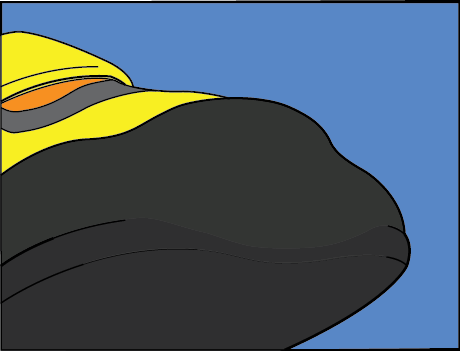RESOLE BASICS
Our standard repairs include a half resole and rand repair.

Half Resole
Our standard resole repair replaces the worn front half of your sole with new rubber. Returning crisp edges and fresh, sticky rubber.
Rand Repair and Half Resole
If the rubber on the toe of your shoe is thin or has a hole you will need a rand repair along with your half resole. We cut out the damaged rubber and splice in a new piece. Because the rand runs under the sole a rand repair must coincide with a resole.
What repairs do my shoes need?
No Repairs Needed
New Sole
This is what your shoe looked like when it was new; crisp edges and fresh clean sticky rubber. If this is what your shoes looked like you probably wouldn’t be looking at this chart.

Half Resole Needed

Perfect Timing
This shoe got to us at the perfect time. The edge of the shoe has worn through almost the full thickness of the rubber but has not yet begun to wear through the rand. This shoe should need only a resole, no rand repair.
Sole Hole
While this shoe has a hole through the rubber, the location is far enough away from the rand that, generally, it shouldn’t need repair. Only the sole of the shoe needs to be replaced, not the rand.

Rand Repair and Half Resole Needed

Questionable
Occasionally even we can’t quite tell if your shoe will need a rand repair. Sometimes it could go either way. While this hole would actually be covered by the sole when repaired, the surrounding rubber may be thin enough to blow when we remove your sole. We do the best we can to keep your repairs to a minimum, but this type of wear may require rand repair.
Too Close
While the hole in this rand may seem as though it may be repaired without rand work, the sad truth says otherwise. This hole is just too close to the edge of the sole. Despite the small size of the hole, these shoes should have come to us just a bit sooner. Now this shoe will require a rand repair.


Thin Rand
Despite the outward appearance this rand actually needs repair. We’ve highlighted the thin spots here, but you may need to check your shoes by pushing around on the toe. If it feels like there’s a soft spot then you very likely need rand repair.
Gym Rand
The sandpaper-like texture of many gym walls can wreak havoc on your shoes. Most often seen on dedicated gym shoes, and most often caused by dragging the toe, these shoes will be close to new with a half sole and a rand repair.

Too Far Gone

Blown Rand
It pains us to see shoes like this, which we cannot repair. Once a hole goes through the upper of the shoe and upper material is missing the shoe is beyond our ability to repair.

